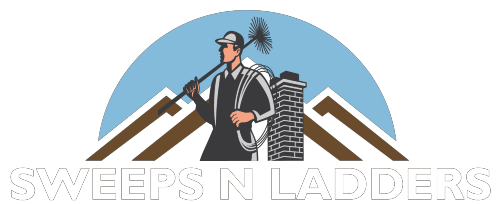The Dangers of Creosote—and How to Remove It Safely
Chimney Safety Tips for the Off-Season
During the summer, your fireplace probably isn’t top of mind—but it should be. Just because you’re not using it doesn’t mean your chimney is in the clear. One of the biggest hidden risks in your fireplace system is creosote buildup—a flammable, sticky substance that could lead to a dangerous chimney fire if left untreated.
At Sweeps N Ladders, we specialize in creosote removal and chimney safety for homes across the area. And summer is the perfect time to address these issues—before cooler weather returns and your fireplace is back in use.
🔥 What Is Creosote?
Creosote is a byproduct of burning wood. As smoke rises through your chimney, it cools and condenses on the inner walls, forming a tar-like residue. Over time, this buildup becomes thicker, harder, and more flammable—posing serious risks to your home and family.
There are three stages of creosote:
Stage 1: Flaky, soot-like residue (easiest to clean)
Stage 2: Hardened, glassy deposits (requires special tools to remove)
Stage 3: Thick, tarry buildup that can lead to chimney fires (dangerous and expensive to fix)
🚨 Why Creosote Is Dangerous
Even a small amount of creosote can ignite if temperatures in your chimney get high enough. A chimney fire can:
Spread quickly to your attic or walls
Destroy your chimney liner or masonry
Go unnoticed until it's too late
Result in costly repairs or complete chimney replacement
And the worst part? You might not know creosote is there—until it’s a serious problem.
🧯 Chimney Safety Tips for Creosote Removal
Now that it’s summer and your fireplace is idle, this is the best time to schedule your chimney inspection and cleaning. Here’s what you need to know:
✅ 1. Don’t DIY Heavy Creosote
Stage 2 and Stage 3 creosote require professional tools and training. Trying to remove it yourself can spread the mess, damage your flue, or put you at risk of inhaling dangerous particles.
✅ 2. Schedule an Annual Chimney Inspection
The National Fire Protection Association (NFPA) recommends a yearly chimney inspection, even if you don’t use your fireplace often. Creosote can still build up from occasional use.
✅ 3. Use a Certified Chimney Sweep
Always hire a certified chimney professional like Sweeps N Ladders. We know how to properly assess, clean, and maintain your chimney to reduce fire risks and keep your system running safely and efficiently.
🛠️ How We Safely Remove Creosote
At Sweeps N Ladders, we use industry-grade tools and techniques to carefully remove creosote without damaging your chimney. Depending on the severity, this may include:
Rotary brushing systems
Chemical treatments for heavy creosote
Manual scraping and vacuum extraction
Full chimney inspection post-cleaning
We also offer guidance on burning habits and chimney safety tips to help prevent future buildup.
Schedule Your Summer Chimney Service Today
Creosote won’t disappear on its own—and waiting until fall may leave you stuck behind a long line of other homeowners. Beat the rush by scheduling your summer chimney cleaning now.
🧹 Ready for peace of mind?
Trust Sweeps N Ladders for expert creosote removal and chimney safety in every season.
👉 Schedule your inspection today or give us a call to speak with one of our certified chimney professionals.
